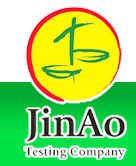Linen, derived from the flax plant (Linum usitatissimum), is a natural cellulose fiber renowned for its exceptional durability, breathability, and eco-friendly properties. Key features include:
-
Strength and Longevity: Linen fibers are among the strongest natural fibers, becoming softer with repeated use while maintaining structural integrity.
-
Moisture-Wicking and Breathability: Its hollow fiber structure allows efficient moisture absorption (up to 20% of its weight) and rapid evaporation, making it ideal for hot climates.
-
Temperature Regulation: Naturally thermoregulating, linen keeps the body cool in summer and warm in winter.
-
Texture and Luster: Raw linen has a slightly coarse texture with a subtle, organic sheen, often showcasing slubs or irregular threads that highlight its artisanal quality.
-
Sustainability: Flax requires minimal water, pesticides, or fertilizers compared to cotton, and the entire plant is utilized, reducing waste.
Style of Linen Fabric:
Linen fabric embodies a relaxed, understated elegance. Its aesthetic is characterized by:
-
Casual Sophistication: A naturally wrinkled, lived-in appearance that conveys effortless style.
-
Neutral Palette: Often dyed in earthy tones (beige, oatmeal, taupe) or muted pastels, though bold hues are increasingly popular.
-
Textural Depth: Visible weave variations and slubs create tactile and visual interest.
-
Lightweight Drape: While crisp when new, linen softens over time, achieving a fluid drape suited to loose, flowing silhouettes.
Trends in Fashion Applications:
Linen has surged in popularity due to the rise of sustainable fashion and minimalist aesthetics. Key trends include:
-
Year-Round Versatility: Once limited to summer collections, designers now layer linen for autumn/winter (e.g., tailored coats, knit-blend sweaters).
-
Gender-Neutral Designs: Unisex, oversized shirts, trousers, and utility-style jumpsuits capitalize on linen’s unstructured charm.
-
Luxury Hybrids: High-end brands (e.g., Lemaire, Jacquemus) blend linen with silk or recycled polyester for refined textures, balancing casualness with polish.
-
Innovative Textures: Crinkled, washed, or brushed linen adds dimension to dresses, suits, and accessories like structured bags.
-
Zero-Waste Fashion: Linen’s durability aligns with upcycled designs and modular garments.
Future Outlook:
As consumers prioritize sustainability and comfort, linen is expected to dominate "slow fashion" collections. Technological advancements in enzyme softening and wrinkle-resistant treatments are expanding its applications, while heritage craftsmanship (e.g., Belgian or Irish linen) remains a premium selling point. From resortwear to office-appropriate suiting, linen’s fusion of eco-credentials and timeless appeal cements its role as a staple in conscious wardrobes.
Source: Textile Fabric Knowledge
|


















